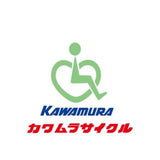Home visits are the key method used to undertake home assessments and plan and monitor home modification recommendations, while occupational therapists are the professionals most often called upon to conduct home visits.
Managing home hazards through home assessments and home modifications are effective strategies to prevent falls among older people. Home visits by occupational therapists are therefore now considered an essential part of clinical practice.
Tips on home assessments and modification
Living Room
- Remove mat which do not have a non slip backing or are not firmly secured to the bathroom floor.
- Remove mats which are placed on top of a slippery tiled floor or on top of a existing carpet.
- Have light bulbs with wattage of at least 75w. 100w frosted light globes are recommended BUT check the light fittings you have allow for this. If not add further light fittings to increase the general lighting in a room.
- Ensure that outdoor plant are not preventing light coming in through window.
- Ensure that you wear supportive footwear when mobilizing at home - both indoor and outdoor.
- Never mobilize at home wearing only socks or stockings.
- Clear walkways of extension cords or telephone cords.
- Remove and rearrange furniture that protrude into the main walkways or obstructs the room.
- Repair any floor coverings that are not fitted securely or that are torn and worn badly.
- Remove scatter rugs which are not secured to the floor.
- Tack the edges down fixing the rug into the floor to ensure the edges do not curl.
- Use double-sided tapes to secure the mat to the floor.

Kitchen
- Rearrange your kitchen cupboards to avoid frequent bending, reaching or climbing on chair to reach high places.
- Store regularly used items between waist and shoulder level.
- Store lightweight and rarely used items on higher level.
- Make sure items are stored safely in the cupboard, so that they do not fall out of the cupboard when they are opened.
- Investigate possibilities of an eating area in the kitchen, eg a breakfast bar, or small chair.
- Make sure there are clear, level surfaces between the fridge, sink and preparation areas in the kitchen.
- Be sure to wipe spills as soon as they occur, especially in the kitchen, laundry and bathroom.
- Use chairs with armrest which extend forward to provide enough leverage to help get out of the chair.
- Chair must have a firm back and cushion to sit on.

Bedroom
- The mattress should be firm, and should not sag in the middle.
- If furniture beside bed is used to get up from the bed,make sure it is firmly fixed and will not move.
- Install bedside lightning which is easy to use in the dark e.g. a touch lamp.
- Install a switch for the main bedroom light for use from the bed, which is accessible in the dark.
- Keep a torch/ flashlight on your bedside table until a permanent bedside light can be fitted.
- Consider a night lamp to be left on at night.
- Sit down to get dressed.
- Keep loose item off the floor.

Stairs and hallway
- Grab rails should be installed alongside the length of all internal steps/ stairs.
- Rails should be 850-900mm from the ground and should extend the length of the steps within 300mm extensions at the top and bottom if possible. They should be fixed firmly into wall fixings. The width of the rails should be easy to grip.
- Preferably rails should be installed on both sides of the stairs.
- Install extra light switches at the top and bottom of internal steps - refer to an electrician.
- Install extra light fittings if the stair is not well lit - refer to an electrician.
- Remove obstacles from main walkways - especially at the top and bottom of stairs.
- Step treads should be no more than 150mm high for each steps.
- Step tread heights should be same for every steps.
- Paint a white or yellow strip with non-slip materials on the edge of the outside steps to make them more visible during the day and night.
- Do not use a patterned floor covering as the edge of indoor steps might be difficult to see - especially at night.
Bathroom
- Store toiletries and bathing accessories within reach of user when in bath to prevent overreaching and decrease the risk of slipping.
- Use a soap on a rope or put a bar of soap inside some panty hose that is tied to taps to avoid dropping it on the floor, or use shower gel that is in a container that can be hooked on to the shower outlet or tap.
- Use a non-slip mat - BUT the back of the mat must be kept free of soapy residues, it must be kept clean and dry after each use to prevent it slipping on the floor, and it must not block the floor drain.
- Be sure to wipe up spills as soon as they occur
- Dry self - especially feet - as much as possible before stepping on to a tiled floor, to avoid dripping of water onto the floor.
- Use a well secured, absorbent mat to stand on whilst drying self after a shower or bath.
- Install grab rails to ensure safety transfer. Make sure grab rails are securely fastened to support within the walls - refer to occupational therapist for assessment.
- A raised toilet seat might make getting up from toilet easier.
- To avoid the rails themselves becoming slippery when wet, a self-adhesive non slip tape can be wrapped around them.
- If getting in and out of the bath is dangerous, consider removing the bath and installing a walk-in shower recess.
If you have any uncertainties about the assessments or modifications, please do not hesitate to approach us for home hazard assessment by professional team.
![[5-7 December 2025] MyWellFair](http://ielder.asia/cdn/shop/articles/Dr_Kong_speak_at_My_Well_Fair_692e65ea-b60f-4628-9e7a-d4eb09da0256_700x700_crop_center.jpg?v=1765854001)







![[22 Jan 2026] Talks on Integrative Medicine and Home Improvement Tips](http://ielder.asia/cdn/shop/articles/afternoon_tea_with_AIM_Healthcare_f5300f6f-35d1-496a-ac5a-1d7f3cf80953_700x700_crop_center.jpg?v=1764334538)
![[8 January 2026] Managing Chronic Diseases with Integrative Medicine: A Collaborative Approach (Invitation to Healthcare Professional)](http://ielder.asia/cdn/shop/articles/afternoon_tea_with_AIM_Healthcare_c57790d2-8d2c-46d8-8a6f-51607e217ef2_700x700_crop_center.jpg?v=1764334504)





Leave a comment